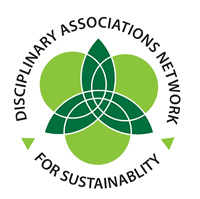Are you or your students worried about the impacts of climate change and not sure what to do to help create significant change? Organized by the Higher Education Associations Sustainability Consortium (HEASC) and the Disciplinary Associations Network for Sustainability (DANS), Beyond Doom and Gloom: Climate Solutions is a new initiative to empower students, educators and the public to advocate for climate solutions. We seek to direct the frustration and worry about climate change into increased knowledge and productive actions.
Faculty Resources
To support faculty in teaching students about how they can contribute to a clean energy future, we have developed a short video, powerpoint slides and optional short assignments that you can use in your courses. We’ve also created a webpage that describes opportunities for students to participate in creating climate solutions. You may also wish to check out the webinar that launched this initiative: “Beyond Doom and Gloom: Include Solutions to Climate Change,” presented by Dr. Debra Rowe, President of the US Partnership for Education for Sustainable Development.
Civic Engagement
Sustainability Improves Student Learning has assembled a variety of resources on civic engagement and student learning. Here are some key findings that support the integration of civic engagement into the curriculum:
- Students who participate in civic engagement learn more academic content (Gallini & Moely 2003).
- Civically engaged students learn higher-order skills—including critical thinking, writing, communication, mathematics, and technology—at more advanced levels of aptitude (Cress 2004).
- Civic engagement increases students’ emotional intelligence and motivates them toward conscientious community action (Bernacki & Jaeger 2008).
Clean Energy
The National Renewable Energy Laboratory’s (NREL) Renewable Electricity Futures Study (2012) shows that clean energy is a key solution to climate change. It finds that:
- Renewable electricity generation from technologies that are commercially available today, in combination with a more flexible electric system, is more than adequate to supply 80% of total U.S. electricity generation in 2050 while meeting electricity demand on an hourly basis in every region of the country.
- The abundance and diversity of U.S. renewable energy resources can support multiple combinations of renewable technologies that result in deep reductions in electric sector greenhouse gas emissions and water use
- Significant expansion of renewable generation beyond the current levels (about 13% of total generation) could be achieved with little or no increase in electricity prices with continued advancements in renewable technologies.
For additional information about teaching about clean energy, see the Call to Energy Literacy and related resources. Also, Living Room Conversations provides materials to facilitate conversations to find common ground about clean energy across the political spectrum.

